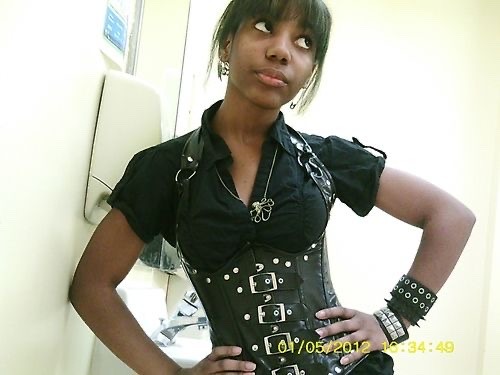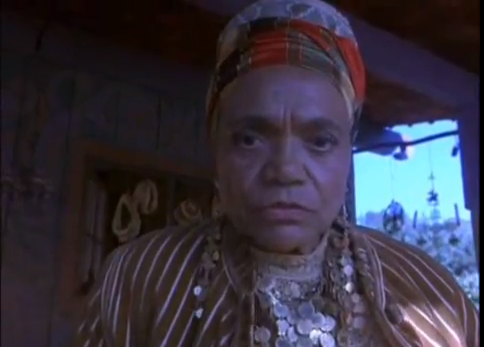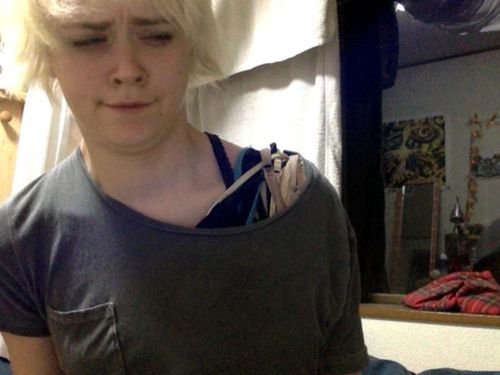Well You Don't Have To Wait Any Longer, Your Offices, And As A Surprise Your Lab Too, Has Been Imploded.
Well you don't have to wait any longer, your offices, and as a surprise your lab too, has been imploded.
does zero’s office remain for today? or is there going to be heavy bombing again?
(aka; havent seen u in a while and the dr is finally not a robotickler, but my offices stay…oddly present…)
Mmmh I have been trying to implode the fourth dimension to kill us all, but thus far I haven't been successful. But I have a spot in my planning available if you insist that I bomb your offices.
Mmmmh I'm on my way
Do you prefer to have them imploded or exploded?
More Posts from Shadowymetalhead and Others








Black femme goths
Beginners Guide to Descriptive Sentences
Hi writers.
I’m Rin T, and in this post I’m excited to share with you a detailed guide on how to craft vivid descriptions and descriptive sentences for your writing. I’ve long believed that descriptive writing is the magic that turns ordinary text into an immersive experience. When done well, every sentence acts like a brushstroke that paints a scene in the reader’s mind.
──────────────────────────── Why Descriptive Writing Matters ────────────────────────────
I have seen how powerful descriptions can engage readers and establish a strong connection with the narrative. Descriptive writing is not simply about decorating your work; it is about building an atmosphere that transports your reader to a world. your world.
When you write descriptions, remember:
You are setting the tone.
You are building a world.
You are evoking emotions.
You are inviting your readers to experience your story with all their senses.
──────────────────────────── Step-by-Step: Crafting Vivid Descriptions ────────────────────────────
Below are my personal tips and tricks to help you build detailed and captivating descriptions:
Begin With the Senses
Description does not solely depend on what the eyes can see. Consider sound, smell, taste, and touch. For instance, instead of writing “The witch’s hut was eerie,” try elaborating: “The witch’s hut exuded an eerie aura. The creaking timber and distant echoes of whispering winds mingled with the pungent aroma of burnt sage and mysterious herbs.” In this way, you help the reader not only see the scene but also feel it.
Choose Precise and Evocative Language
Precision in language is vital. Replace generic adjectives with specific details to boost clarity and imagery. Rather than “The forest was dark,” consider: “The forest was a labyrinth of shadowed boughs and muted undergrowth, where the light barely touched the spindly branches, and every step unveiled whispers of ancient spells.” Specific details create tangible images that stay with readers.
Show, Don’t Just Tell
A common mistake is to “tell” the reader how to feel, rather than “showing” it through context and detail. Instead of writing “It was a spooky night,” immerse your reader: “Under a pallid crescent moon, the night unfurled like a canvas of foreboding whispers; broken branches and rustling leaves narrated the secrets of a long-forgotten curse.” By showing the elements, you invite the reader to experience the fear and mystery firsthand. (You don't need to be as dramatic as my examples, but this is simply for inspiration)
Use Figurative Language Thoughtfully
Metaphors, similes, and other figures of speech lend an artistic flair to your descriptions. When writing about a scene in a magical world, you might say: “Her eyes shone like twin beacons of moonlit silver, cutting through the gloom as if to part the veil of night itself.” Such comparisons evoke emotions and deepen the reader’s connection with the scene. However, be cautious not to overdo it; a little figurative language can go a long way.
Strike a Balance Between Details and Pacing
While elaborate descriptions are alluring, too many details can weigh down your narrative. Consider introducing the broader scene first and then focusing on key elements that define the mood. For instance, start with an overview: “The village lay nestled between ancient stone arches and mist-covered hills.” Then, zoom into details: “A solitary, ivy-clad tower sent spiraling tendrils of mist into the twilight, as if guarding secrets of a long-lost incantation.” This technique creates a rhythm, drawing readers in gradually.
──────────────────────────── Practical Exercises to Enhance Your Descriptive Writing ────────────────────────────
To help you practice these techniques, try the following exercises:
Sensory Detail Drill: Select a familiar scene from your fantasy world (for example, a witch’s secluded garden). Write a short paragraph focusing on each of the five senses. What do you taste as you bite into a magical fruit? What sounds resonate in the quiet of the enchanted night? This drill helps you to avoid flat descriptions and encourages you to integrate sensory experiences.
Revision and Refinement: Take a simple sentence like “The night was cold,” and transform it using the advice above. Rework it into something like, “The night was a canvas of shimmering frost and darkness, where every breath of the wind carried a hint of winter’s sorrow.” Compare the two, and notice how minor adjustments can dramatically heighten the mood.
Peer Review Sessions: Sharing your work can offer invaluable insights. Exchange your descriptions with fellow writers and ask for focused feedback, Does the description evoke the intended emotion? Does it deliver a clear image? Use these sessions as opportunities to improve and refine your craft.
──────────────────────────── Common Pitfalls and How to Avoid Them ────────────────────────────
Through my years of writing, I've learned that even the most passionate writers can stumble. Here are some pitfalls to watch out for:
Overloading With Adjectives: While it’s tempting to create elaborate descriptions, too many adjectives and adverbs can distract rather than enhance. Aim for clarity and purpose in every word. Instead of “a very dark, spooky, frightening forest filled with creepy sounds,” try “a forest shrouded in ominous silence, where every rustle hinted at unseen mysteries.”
Falling Into Clichés: Familiar images can sometimes render your work predictable. Try to avoid worn phrases. Instead of “as dark as night,” imagine “as impenetrable as the void that separates worlds.” Unique expressions capture attention and create lasting impressions.
Neglecting the Flow: Descriptions are vital, but the narrative must continue to drive forward. Check that your detailed passages serve to enhance the storyline rather than bog it down. Ask yourself: Does this description bring the reader closer to the action, or does it detract from the momentum of the narrative?
──────────────────────────── Advanced Techniques for the Aspiring Writer ────────────────────────────
Once you’re comfortable with the basics, consider these advanced methods to elevate your descriptions into artful prose:
Integrate Descriptions Seamlessly: Instead of isolating your descriptions, weave them into dialogue and action. For example, as a witch brews her potion, you might describe the bubbling cauldron and swirling mists as part of her incantation, not just as a standalone scene. “As she whispered the ancient words, the cauldron responded, its surface rippling like a dark mirror reflecting centuries of secrets.”
Reflect Character Perspectives: Let your characters’ emotions color the scene. If a character fears a looming threat, their perception will add a layer of tension to the environment. “I entered the dim corridor with trepidation, my heart pounding as the flickering torchlight revealed spectral figures dancing along the walls.” This technique makes the description both situational and personal.
Use Rhythm: The cadence of your sentences can mirror the pace of your narrative. In high-tension moments, short, abrupt sentences heighten the urgency. Conversely, in serene scenes, longer, flowing sentences can create a tranquil atmosphere. Experiment with sentence structure until you find a balance that suits both your style and the mood you wish to convey.
──────────────────────────── Final Thoughts and Encouragement ────────────────────────────
your narrative is your unique creation. you too will find your distinctive voice. I encourage you to keep experimenting with different techniques until your descriptions feel both natural and mesmerizing. Write freely, revise diligently, and most importantly, let your creative spirit shine through every line.
Thank you for joining me. I hope these tips can help you.

How I join skeins
Checklist of character traits prone to inconsistency:
Heyo, quick one today. It’s great to give a lot of detail to character traits and personality quirks, but they aren’t real people, you’ve made them up, and thus, might not have a perfect memory for how you’ve described them, or drawn them in the past.
So before you post or publish, do yourself a favor and make sure the following are consistent throughout your story, if applicable:
If they’re left or right handed, or ambidextrous.
Which side their hair parts on.
Which side their scars are on (especially facial scars).
Which eye has the patch or is just missing, and how much or little the character fiddles with it.
Missing glasses and how prone a character is to forgetting them or anal about cleaning them. Glasses are always dirty (do they clean them with a proper cloth or the edge of their shirt?).
Which side broken, missing, or bandaged fingers are on.
If they’re wearing a cast, how it inhibits their mobility.
If they have a leg or foot injury, how severely they limp.
If their clothing takes damage, when/how they replace it or repair it, and whether or not they’re wandering around town accidentally covered in blood or grease or all-purpose flour.
Which injuries they sustain that should still be bothering them, like pulled shoulders, bruises, shin splints, paper cuts, sun burns, cramps, carpal tunnel, arthritis, tinnitus, road rash, and stubbed toes or pinched fingers.
Which side of their body buttons, rings, bracelets, pins, brooches, badges, or name tags are on.
If they’re wearing gloves or mittens, when they take them off or how their mobility is impacted by them.
How mobility changes if their fingernails are short and stubby or long, or artificial, like typing, eating, and grabbing objects.
If they have a wheelchair, how they transition out of it, into it, and move within it, like getting dressed or putting on shoes, or lifting themselves up into cars and back down—and how public spaces do and don’t accommodate them.
If they have prosthetics, how they maintain them, how they might sound different than someone else—prosthetic feet for runners won’t sound the same as sneakers.
If they need crutches, a walker, a scooter, or a cane, and how the world accommodates them.
If they're colorblind, how it impacts their day to day and descriptions compared to other narrators.
Jewelry often jingles. Pandora bracelets are loud af especially if they’re on your dominant hand when you try to write on a desk. Charm necklaces jingle if you bounce and some earrings can jingle when you shake your head.
Where tattoos are and if they take measures to hide them and how.
An aside about characters with tattoos (from experience):
If they’re new, they still hurt for at least a week depending on the level of detail.
Tattoos are basically mega sunburns and fresh ink should either be covered from the sun or, once it’s healed enough that the skin isn’t broken, heavily sun-screened to preserve coloration. Newer ink is very noticeable in sunlight, just like a healing sunburn.
Black ink tends to turn a bit green over time and sharp details blur. Tattoos are beholden to the skin they’re on, and how it stretches or sags.
Tattoos stink, as plasma and other fluids build up under the wrap (that can either be straight plastic wrap or a dermal cover akin to the stuff used for burn victims).
Tattoos can burn and ache if they’re on the legs when you stand, as blood and your body weight settles back into place.
Tattoos do very weird things to your body depending on the amount of ink and the time it took to design. Your skin peels kind of, but not exactly, like a sunburn, and every artist has their own tips for aftercare.
If the ink is over thin skin (I have one that ends over my ankle) the ink may have a texture left behind, a raised puffy bump, that fades over time.
A character receiving a tattoo might have this kind of bell curve effect, where it hurts really bad at the start, until adrenaline kicks in and dampens it, and then again once their adrenaline runs out. There is no pain quite like tattoo pain and everyone describes them differently. I like to think of them as itching a bug bite on a sunburn, dialed up to 11.
According to my past artists, women almost universally handle the pain better than men. I have definitely suffered other injuries worse than tattoo pain.
Fine linework hurts more than broad stroke coloring or shading, because the distribution of pressure is wider with more needles packed together. The larger the needle bundle, the less it hurts. All of mine are water color and the *splash* effect for the illusion of water drops uses a single needle and it’s always the most painful part.
Feel free to tag any that I missed!
I don't know who she is, or what the curse would be, but I ain't gonna risk it.
“But if you forget to reblog Madame Zeroni, you and your family will be cursed for always and eternity.”

1268 kcal to day. Too much. I just don't have enough self control. Can yall send me tips and meanspo, I need it.
This is so true.
reblog if you’ve read fanfictions that are more professional, better written than some actual novels. I’m trying to see something
Cooking show I desperately want: Professional chefs compete to wow and astound totally amateur food critics who don’t know dick about shit. Get eliminated on totally arbitrary grounds such as “I don’t like sour cream.”

“ummmmm ur bra strap is showing :/ ”

-
 shadowymetalhead reblogged this · 5 months ago
shadowymetalhead reblogged this · 5 months ago -
 zer0-otheactualnumber reblogged this · 5 months ago
zer0-otheactualnumber reblogged this · 5 months ago -
 shadowymetalhead reblogged this · 5 months ago
shadowymetalhead reblogged this · 5 months ago -
 zer0-otheactualnumber reblogged this · 5 months ago
zer0-otheactualnumber reblogged this · 5 months ago -
 zer0-otheactualnumber liked this · 5 months ago
zer0-otheactualnumber liked this · 5 months ago -
 shadowymetalhead reblogged this · 5 months ago
shadowymetalhead reblogged this · 5 months ago

Evil scientist ??????????????????????????????? Alternative, Metalhead, Writer, Artist, Singing, Witch, Crocheting, why are we here, why do we exist???!
223 posts